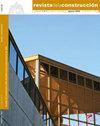The effect of polypropylene, steel, and macro synthetic fibers on mechanical behavior of cementitious composites
IF 1.4
4区 工程技术
引用次数: 3
Abstract
Incorporation of fibers in concrete has been an efficient technique to prevent crack propagation, thus improving ductility, durability, toughness and strength of concrete. In this context, a comprehensive experimental study has been conducted concerning the compressive and flexural strength of fiber reinforced concrete, through preparing nine concrete batches with polypropylene fibers, steel fibers and macro synthetic fibers; and the hybrid forms combining polypropylene (PP) and steel, polypropylene and macro synthetic fibers. Fiber inclusion in concrete caused slight variations in compressive strength. However, the flexural strength for all sample sets was significantly increased. The highest values of strength increase relative to control concrete were 60.67%, 42.45% and 27.05% incorporating steel, polypropylene and macro synthetic fibers, respectively. It was also noted that the higher aspect ratio of steel fibers resulted with better flexural performance, among the steel fiber reinforced concrete samples. Hybrid forms of polypropylene-steel and polypropylene -macro synthetic fibers achieved the highest flexural strength compared with samples including single type of fiber. In blended groups, utilization of polypropylene fibers with steel fibers and with macro synthetic fibers resulted with 69.81% and 78.99% of increase in flexural strength relative to control specimens, respectively.聚丙烯、钢和宏合成纤维对胶凝复合材料力学性能的影响
在混凝土中掺入纤维是一种有效的防止裂缝扩展的技术,从而提高混凝土的延性、耐久性、韧性和强度。在此背景下,通过配制聚丙烯纤维、钢纤维和宏合成纤维9批混凝土,对纤维增强混凝土的抗压和抗弯强度进行了全面的试验研究;以及聚丙烯(PP)与钢、聚丙烯与宏合成纤维的混杂形式。混凝土中纤维夹杂物引起抗压强度的微小变化。然而,所有样品组的抗弯强度都显著增加。与对照混凝土相比,掺入钢、聚丙烯和宏合成纤维的混凝土强度增幅最高,分别为60.67%、42.45%和27.05%。研究还发现,钢纤维长径比越高,试件的抗弯性能越好。混杂形式的聚丙烯-钢和聚丙烯-宏合成纤维与单一类型纤维相比,获得了最高的弯曲强度。在共混组中,聚丙烯纤维与钢纤维和宏观合成纤维的掺入,其抗弯强度分别比对照试件提高了69.81%和78.99%。
本文章由计算机程序翻译,如有差异,请以英文原文为准。
求助全文
约1分钟内获得全文
求助全文
来源期刊

Revista de la Construccion
工程技术-工程:土木
CiteScore
2.30
自引率
21.40%
发文量
0
期刊介绍:
The Journal of Construction is aimed at professionals, constructors, academics, researchers, companies, architects, engineers, and anyone who wishes to expand and update their knowledge about construction. We therefore invite all researchers, academics, and professionals to send their contributions for assessment and possible publication in this journal. The publications are free of publication charges.
OBJECTIVES
The objectives of the Journal of Construction are:
1. To disseminate new knowledge in all areas related to construction (Building, Civil Works, Materials, Business, Education, etc.).
2. To provide professionals in the area with material for discussion to refresh and update their knowledge.
3. To disseminate new applied technologies in construction nationally and internationally.
4. To provide national and foreign academics with an internationally endorsed medium in which to share their knowledge and debate the topics raised.
 求助内容:
求助内容: 应助结果提醒方式:
应助结果提醒方式:


